Forged for Battle: The Six-Century Reign of the Roman Gladius
The gladius Hispaniensis, an iconic symbol of Roman military was used by foot soldiers for almost 6 centuries.
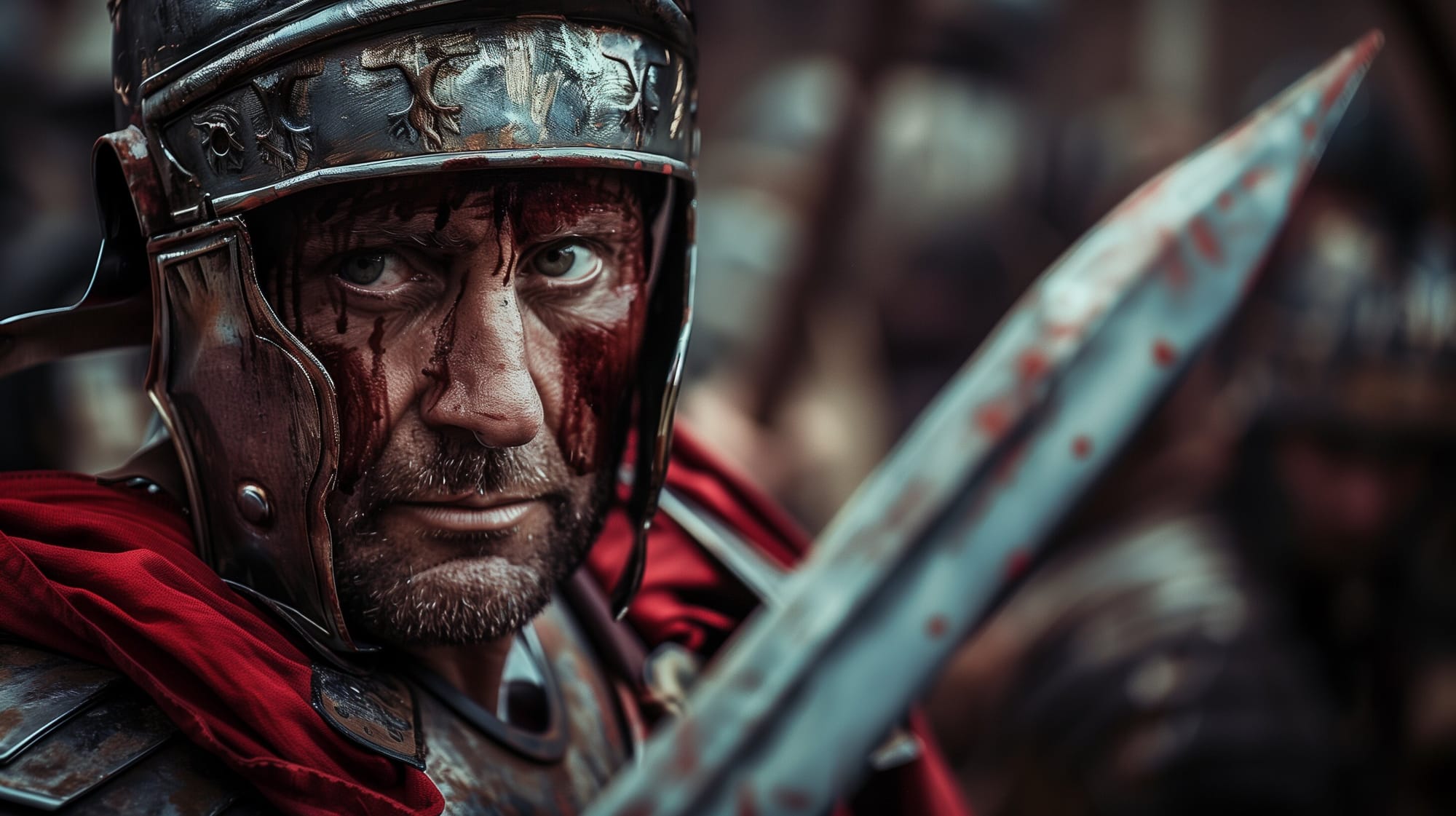
The Gladius Hispaniensis, or Spanish sword, was originally used by tribes in the Iberian Peninsula. Following the Punic Wars, it became the standard sword for Roman legionaries from the 2nd century BCE. Its relatively short, double-edged blade was ideal for cutting and thrusting armor in the tight spaces of hand-to-hand combat on ancient battlefields.
The Roman Gladius
To understand the importance that the gladius had for the Romans, we can start with Livy. When he described the fight between Macedonians and Romans in 200 BC, Livy describes the devastating effects that the Gladius had on the mental health and psychology of the men of King Philip V of Macedonia, that were used to fight with spears, arrows and javelins:
“Philip, thinking that he would do something to secure the affection of his people and increase their readiness to encounter danger on his behalf if he undertook the burial of the cavalrymen who had fallen on the expedition, ordered their bodies brought into camp, that the funeral honour might be seen by all. Nothing is so uncertain or so unpredictable as the mental reaction of a crowd.
What he thought would make them more ready to enter any conflict caused, instead, reluctance and fear; for men who had seen the wounds dealt by javelins and arrows and occasionally by lances, since they were used to fighting with the Greeks and Illyrians, when they had seen bodies chopped to pieces by the Spanish sword, arms torn away, shoulders and all, or heads separated from bodies, with the necks completely severed, or vitals laid open, and the other fearful wounds, realized in a general panic with what weapons and what men they had to fight.”
Livy, The History of Rome, Book 31
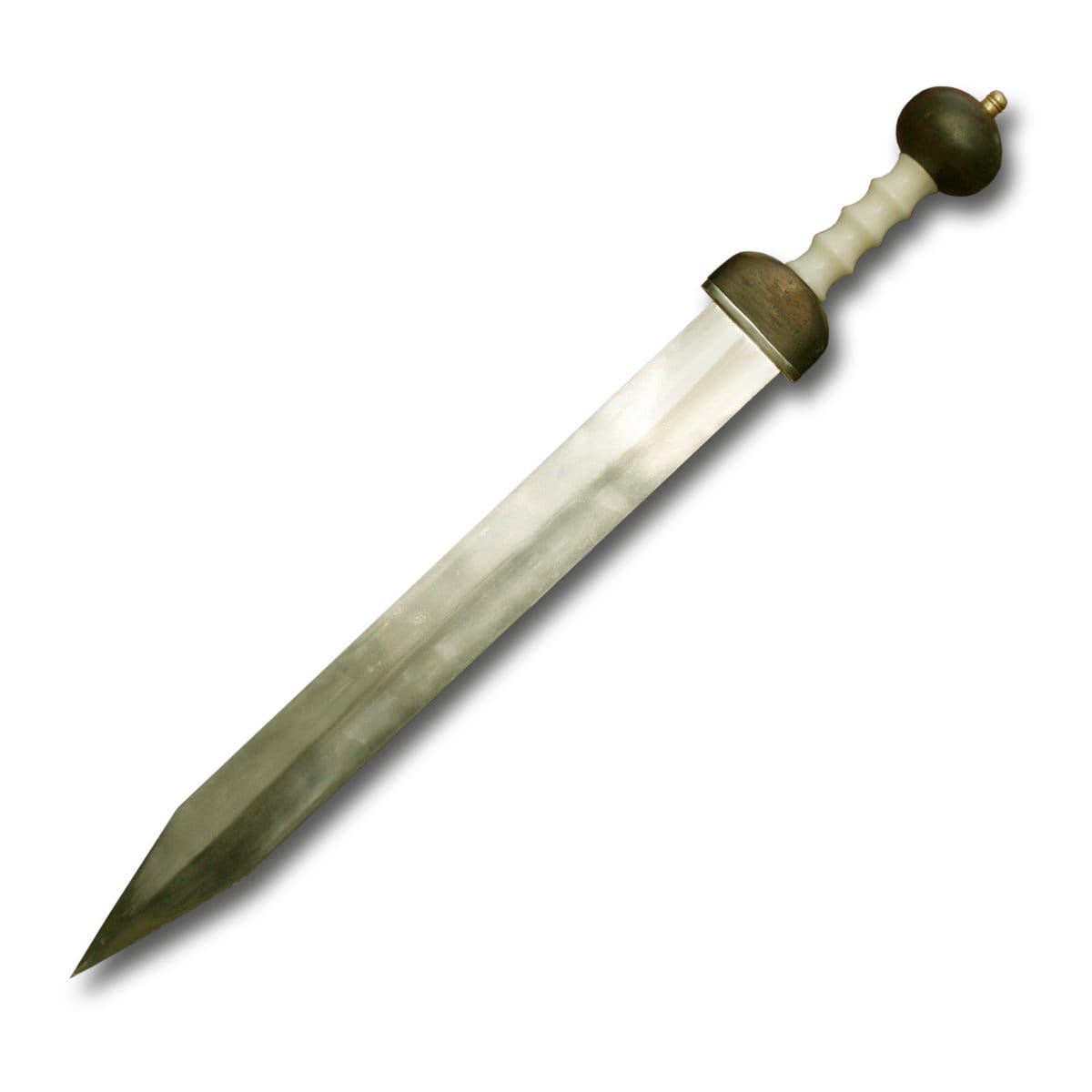
But did the Romans really copy the Spanish sword?
There is only one text which clearly talks about the adoption of an Iberian sword from the Romans, and that is the Suda, a Byzantine lexicon which was compiled at the end of the 10th century B.C.
The paragraph we are looking for is this: "The Celtiberians by far surpass other people in the fashion of their machairai. This has an effective point, and a powerful downstroke with either edge. For this reason, the Romans discarded their native sword after the wars with Hannibal and adopted the Iberian weapon. They adopted the form, but the actual quality of the iron and the process of manufacture they were quite unable to reproduce."
Some scholars, suggest that the Romans did not adopt a type of sword but the way of manufacturing it.
If we accept that the Romans imitated a peninsular sword, there are currently two possible dates for this occurrence:
- The Gladius Hispaniensis existed before 225 BC and was the sword described by Polybius as used by the Romans during the Battle of Telamon. This scenario is unlikely because Polybius does not mention the multipurpose nature of the Hispanic sword (cutting and thrusting), and the Suda indicates that the Romans adopted the Hispanic weapon after the war with Hannibal.
- The sword appeared during the Second Punic War, possibly between 216 BC (Battle of Cannae) and 209 BC (the fall of Cartagena), or shortly after the war. This option aligns with the literary evidence.
The archaeological discoveries that have allowed for a precise definition of the Republican Roman gladius also enable us to dismiss earlier theories regarding the possible Hispanic prototypes of the Roman sword, such as the falcata, the fronton sword, or antennae weapons. Modifications to early La Tene I swords imported from Europe throughout the 3rd century BC resulted in a design nearly identical to the Republican Roman swords recently found in Delos, France, and the Iberian Peninsula.
These modifications included maintaining the blade length at about 60 cm (instead of progressively lengthening it as seen in La Tene II swords in France), replacing metal scabbards with those made of leather or wood with iron rib frames, changing the suspension system to two or three rings instead of a vertical fastener, and adding embossed plates to the scabbard for decoration.
Consequently, the prototype of the Gladius Hispaniensis is a Celtiberian sword with origins not in the Iberian types of the 5th-4th centuries BC, but in the modified Celtic La Tene I sword adapted to local preferences from the late 4th century BC in the Meseta and Southeast.
Over time, the term hispaniensis or hispallicus came to refer to any short, versatile, robust, double-edged sword with a straight blade, becoming synonymous with quality. Later authors used it anachronistically to describe events such as the single combat or duel of T. Manlius against a Gaul set in the 4th century BC. (Gladius hispaniensis: an archaeological view from Ibera by Fernando Quesada)
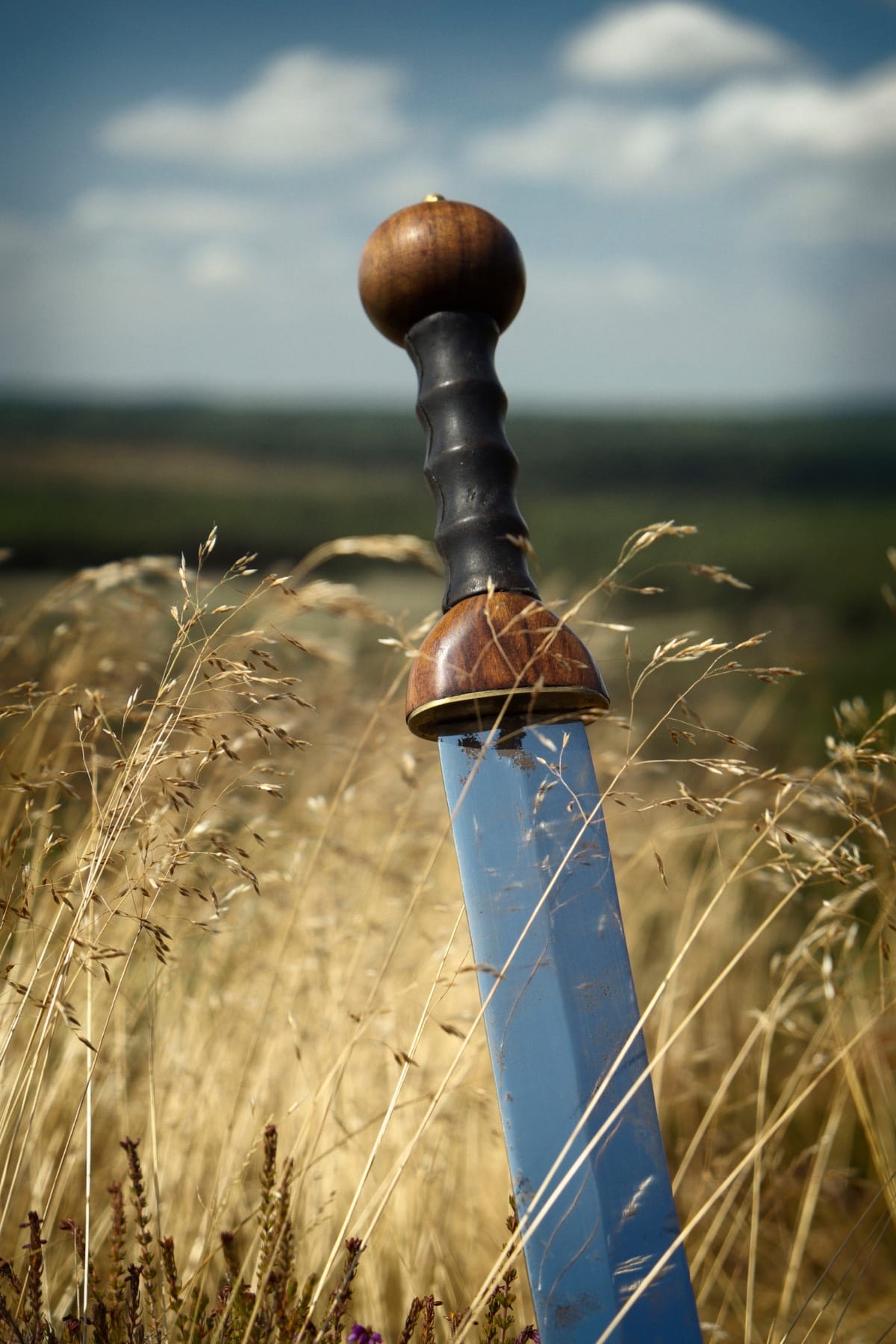
Anatomy of the Gladius
The Gladius was primarily used for close combat. Roman soldiers (legionaries) were trained to use it in tight formations, delivering powerful thrusts to the enemy's torso, often aiming for the stomach or chest. The short length of the blade made it ideal for fighting in the confined spaces of a battle line, where longer swords would be cumbersome.
Blade
Length: Typically 18-24 inches (45-60 cm). Width: About 2 inches (5 cm) at the widest point.
Shape
The blade was double-edged, allowing for effective cutting on both sides, and featured a pointed tip for stabbing.
Construction
Made from high-quality steel, the blade was designed for both slashing and thrusting. The slight taper toward the tip enhanced its piercing capabilities.
Hilt
Pommel –often bulbous and made from materials like wood, bone, or ivory, providing balance to the sword.
Grip
The handle was typically short, designed to be gripped with one hand. It was sometimes wrapped in leather for better grip.
Guard
A small cross-guard protected the hand, often made from wood or metal. It prevented the hand from slipping onto the blade and provided some defense against enemy strikes.
Scabbard
Made from wood, leather, and sometimes metal. The scabbard was often adorned with decorative elements and was worn on the right side of the body.
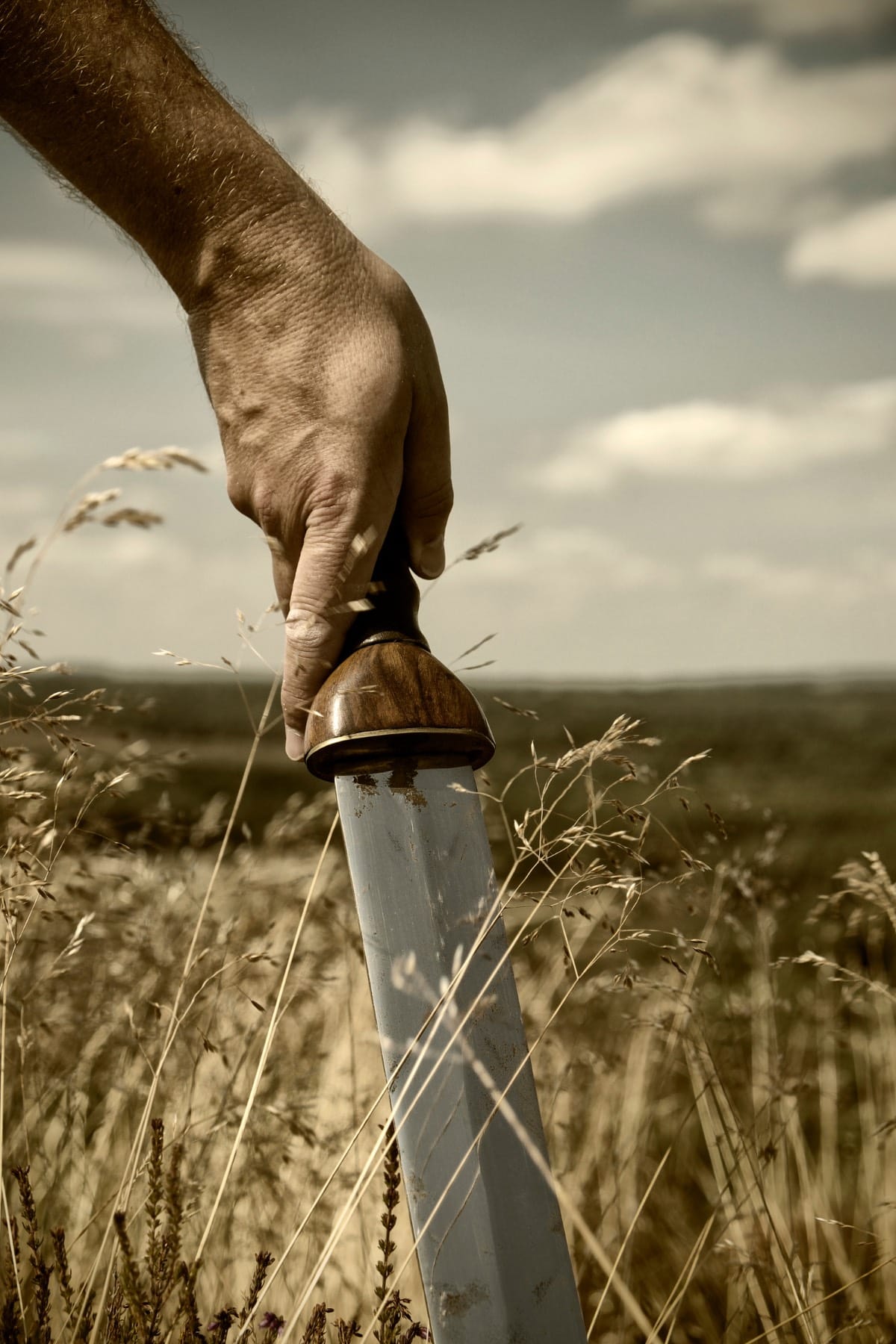
Materials used for Roman Gladius swords
By the time of the Roman Republic, the classical world was well-versed in steel and its production processes. Weapons technology had advanced to a point that fostered the rapid development of innovative steel weapons like the Gladius. Recent metallurgical studies of surviving Roman short swords reveal that the Gladius could be forged either from a single piece of steel or as a composite blade.
Swords made with the first method were crafted from a single bloom at 1,237 degrees Celsius, while those made with the second method required five blooms, each at 1,163 degrees Celsius.
These blooms were formed into five strips with varying carbon content. The central core had the highest carbon concentration, ranging from 0.15 to 0.25 percent, while the edges consisted of four strips of low-carbon steel, with 0.05 to 0.07 percent carbon. The strips were welded together by hammer blows, which increased the temperature enough to create friction welds at the contact points.
The forging process, the most critical part of manufacturing, continued until the steel cooled. When created by welding different strips, the gladius featured a channel down the blade's center. When made from a single piece of steel, the blade had a rhomboidal cross-section. The Gladius blades were double-edged for cutting and had tapered points for stabbing during thrusts, as required by their tactical uses.
Craftsmen ensured the gladius had a solid grip by attaching a knobbed wooden hilt, often with ridges for the user's fingers. Despite being a standardized weapon, the gladius could be decorated according to the owner's preferences. The hilt, known as the capulus, could be ornately designed in various ways. For instance, high-ranking officers and the Praetorian Guard often had hilts sculpted to resemble an eagle's head, which provided an additional grip. Additionally, the blade might be engraved or stamped with the owner's name.
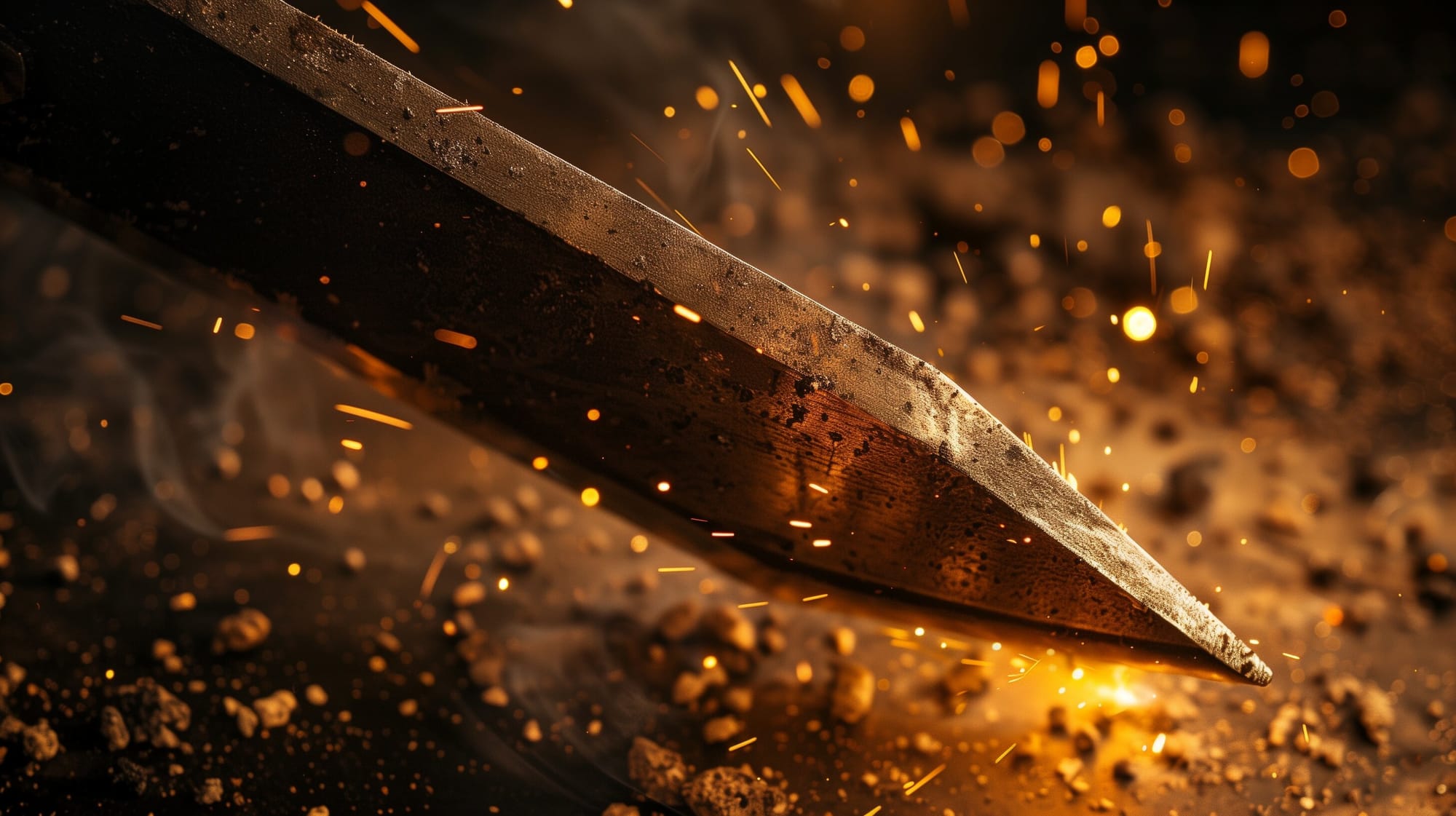
The evolution of the Gladius
Before the advent of the gladius Hispaniensis, Roman soldiers were equipped with the Greek xiphos, a double-edged, one-handed blade used by hoplites. Although archaic compared to the Gladius, the xiphos shared many basic features with the new short sword. Similarly, the seax, a weapon used by the Germanic tribes of northern Europe, had comparable characteristics.
However, none of these weapons were used as effectively as the Roman short sword. After a few years of use, the Romans recognized the superior potential of the Gladius Hispaniensis. They incorporated it into their arsenal and developed a new tactical doctrine to fully exploit its advantages.
Types of Gladius
There were several variations of the Gladius, each named after the region where it was developed or found:
Gladius Hispaniensis
One of the earliest types, inspired by the swords of Iberian tribes. It had a longer blade and was effective for both slashing and stabbing.
Mainz Gladius
Used around the 1st century BCE to the 1st century CE, it featured a waisted blade with a pronounced point, excellent for thrusting.

Fulham Gladius
A variation of the Mainz, with a slightly narrower blade and a more triangular point.
Pompeii Gladius
The most common type used from the 1st century CE onwards, characterized by a straight, parallel-edged blade with a sharp point, optimized for thrusting.
Besides the legionaries, the Roman Gladius was also wielded by gladiators in the arena. Gladiators employed various sets of weapons, and the pairing of combatants for duels was crucial to the Romans. They wanted gladiatorial combat to follow precise rules and ensure a balanced confrontation.
The gladius Hispaniensis was not universally adopted, and some Roman infantry used other types of swords, like the slightly longer spatha with a 70 cm blade, which was more usual among the cavalry. By the 3rd century CE, the longer sword became more prevalent, and the Gladius Hispaniensis was not preferred. However, the double-edged short sword gained popularity with Rome's enemies, who recognized its effectiveness and continued to use it from the 3rd to the 5th centuries CE.





About the Roman Empire Times
See all the latest news for the Roman Empire, ancient Roman historical facts, anecdotes from Roman Times and stories from the Empire at romanempiretimes.com. Contact our newsroom to report an update or send your story, photos and videos. Follow RET on Google News, Flipboard and subscribe here to our daily email.
Follow the Roman Empire Times on social media: